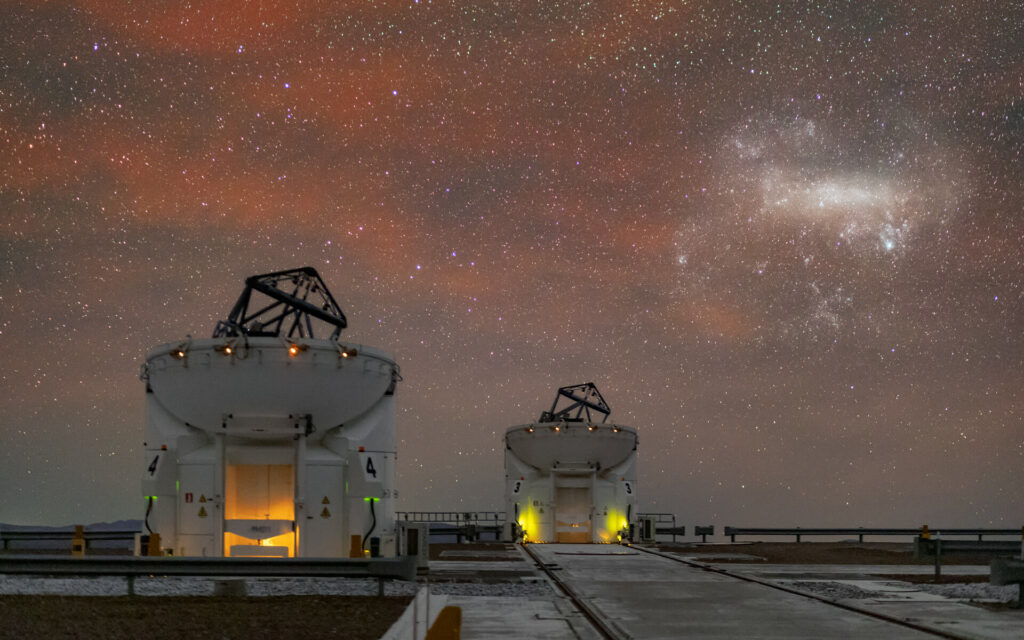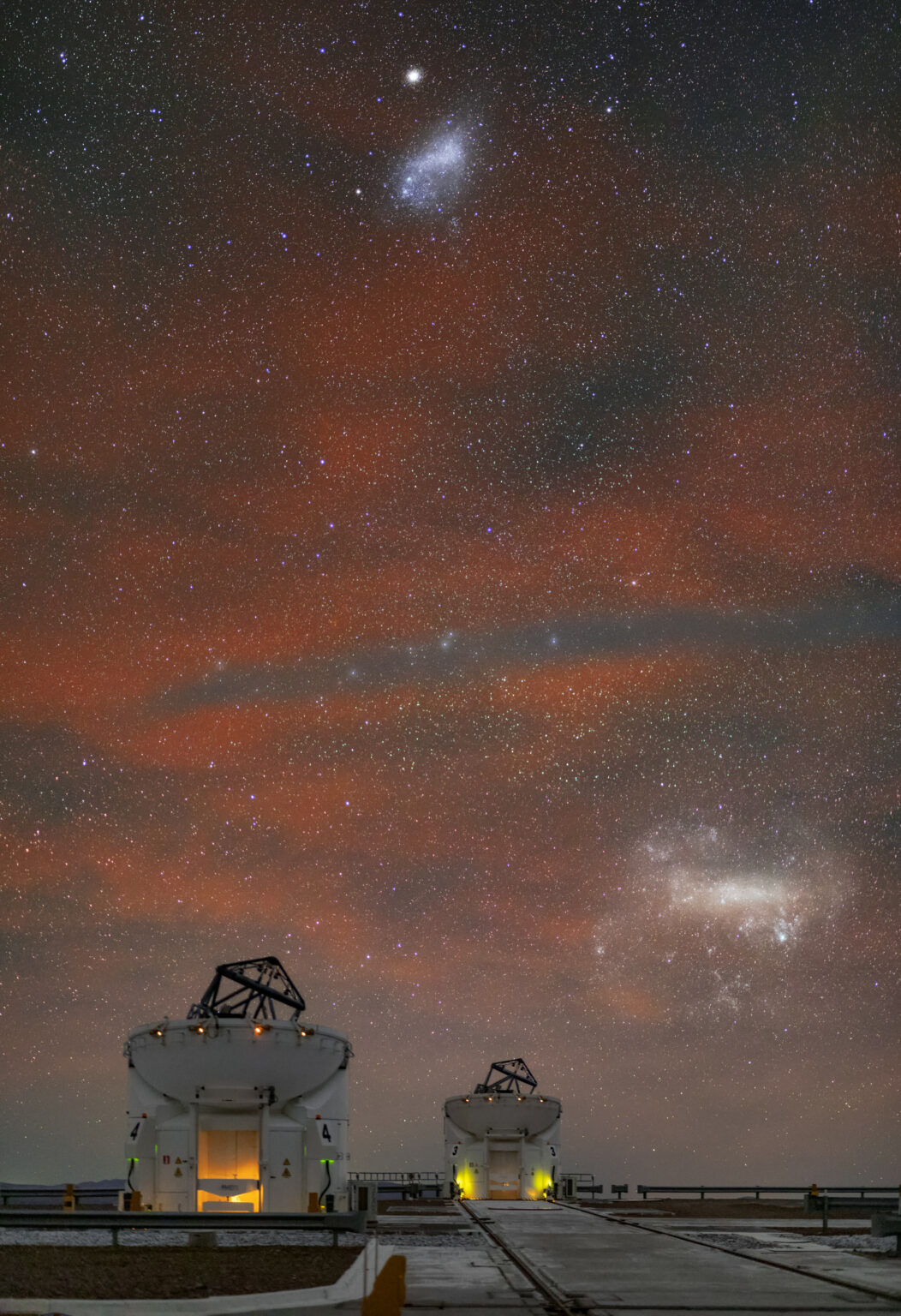The presented photo was taken at the top of the Cerro Paranal Mountain. In the foreground, we can see two auxiliary telescopes of ESO’s Very Large Telescope (VLT) complex aimed at the starry sky.

ESO’s Very Large Telescope
In total, the VLT consists of four main 8.2-meter (“units”) and four 1.8-meter auxiliary telescopes. The main “units” of VLT are stationary. Auxiliary telescopes are mounted on mobile platforms, they can be moved along rails, placed on 30 prepared platforms. This makes it possible to use the entire complex as an interferometer with a tunable base.
Nearest neighbors of the Milky Way
Two “clouds” can be seen in the sky above VLT. In fact, these are the Large and Small Magellanic Clouds — two of about fifty satellite galaxies that orbit our Milky Way.

Although the Magellanic Clouds are much smaller than the Milky Way, they still contain billions of stars. The diameter of the Large Magellanic Cloud (in the image at the bottom right) is 14 thousand light years, and the Small Cloud (above the center of the frame) is 7 thousand light years. They are located at a distance of about 160 and 200 thousand light years from the Milky Way, which makes them our closest neighbors. This is much closer than the famous galaxy in the constellation Andromeda, from which we are separated by about 2.5 million light years.
In the photo, we can also see a faint red glow. This phenomenon is called the glow of the night sky. It occurs due to the natural emission of atoms and molecules of the earth’s atmosphere, in this case oxygen.
Magellanic Clouds can only be seen in the southern sky and provided that it is not polluted by illumination from urban lighting. This is one of the reasons why the VLTs operate in the depths of the Chilean Atacama Desert, remote from civilization. It is here the construction of a grandiose Extremely large telescope is underway, which, after commissioning, will become the largest optical observatory on Earth.
According to https://www.eso.org
